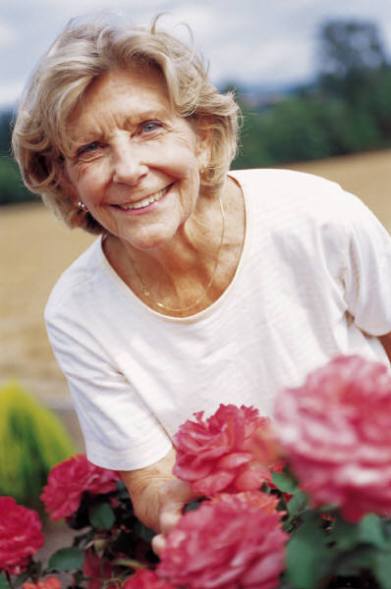CHESTNUT RIDGE, N.Y. (AP) — At the Fellowship Community’s adult home, workers are paid not according to what they do, but what they need; aging residents are encouraged to lend a hand at the farm, the candle shop or the pottery studio; and boisterous children are welcome around the old folks.
 Most of the adult home workers at the commune-like community, 30 miles from Manhattan, live in buildings surrounding the farm as do about 35 independent seniors who don’t yet need the services but plan to live out their days in the community.
Most of the adult home workers at the commune-like community, 30 miles from Manhattan, live in buildings surrounding the farm as do about 35 independent seniors who don’t yet need the services but plan to live out their days in the community.
What a great idea for the aging. Much better than traditional “old-folks home” where the elderly seem like residents of heaven’s waiting room. At the “Farm” caring for the elderly is the main activity, but all the workers also have other responsibilities.
“In a typical workweek, someone will be inside helping the elderly, meaning bringing meals, bathing, meds,” said Will Bosch, head of the community’s board of trustees. “But they’ll also be doing building and grounds maintenance, planting, harvesting, and milking.”
Organizers decline to call it a commune but concede the spirit is similar.
When elders come in, they pay a “life lease” of $27,500 to $50,000, depending on the space they will occupy in the adult home or the “lodges” surrounding it. In addition, they pay $700 to $1,500 a month in rent, and up to $3,000 a month for care, depending on what they need.
This compares to other traditional “assisted living” residences with the cost usually made up of monthly rent with additional fees based on the level of attention the resident requires. In 2011, the national average amount paid was $3,477 / month and different state averages ranged from $2,156 to $5,757. Patients requiring Alzheimer’s or dementia care paid an additional $1,142 or approximately $4,619 / month.
Probably a better comparison would be to the Continuing Care Retirement Communities (CCRC). Like the “Farm” these are residences that provide a continuum of care from independent living to assisted living to skilled nursing. They are designed to enable seniors to remain in a single residential location. This is particularly attractive for seniors with declining health conditions or couples in mixed health. While CCRCs offer much for seniors, they are the most expensive long-term-care solution available. There is a one-time entrance fee and monthly maintenance fees. Entrance fees range from $60,000 – $120,000 and monthly maintenance fees from $400 to $2500.
These figures seem daunting if you have failed to properly prepare for your later years. Early planning can really pay off in the long run. Long term care is as you can see expensive and usually an out of pocket expense. You need to plan for your own long term care and not depend on your relatives or adult children to be able to afford the facility you would prefer. Consider these tips when preparing for or talking to a relative about long term care:
- Plan ahead. Don’t wait until a loved one needs a long term care facility. Start planning early so that you have time to evaluate the options together.
- Work long term care into everyday conversation. If your mother mentions a problem turning on the faucet, for example, you might ask whether she could use help bathing or managing other aspects of personal care.
- Listen to your loved one’s preferences and concerns. If your loved one is mentally competent, recognize his or her right to make decisions about long term care. Stay positive as you remind your loved one that his or her safety is your primary concern.
- Involve others. If your loved one doesn’t respond well to your efforts to talk about long term care, involve trusted contacts — such as other loved ones, clergy, a doctor or an attorney.
The idea of leaving home or receiving in-home help for everyday activities can be distressing. The more you know about the options, however, the better choices you can make.




